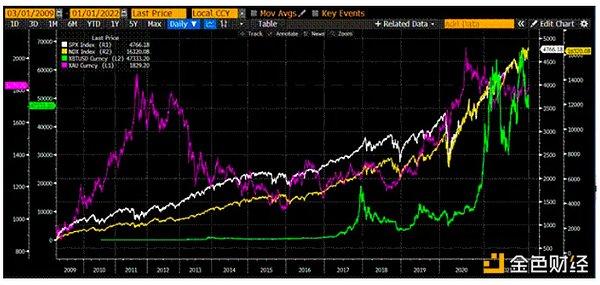Written by Paul Veradittakit, Partner at Pantera Capital
Compiled by Luffy, Foresight News
Meme is defined as a unit of cultural ideas that are transmitted between people. Memes have been deeply intertwined with crypto culture over the past 10 years.
The first Memecoin (Dogecoin) was launched in 2014 as a fun spinoff of Bitcoin and reached a peak market cap of $75 billion during the 2021 bull run.
The Memecoin market has exploded recently. In less than a year, the ERC-20 token (PEPE) centered around Pepe The Frog has surged 400% to $2 billion in market value. Another Memecoin (DEGEN) featuring a purple top hat, launched on decentralized social network Farcaster, has surpassed $1 billion in market value, surpassing Farcaster’s own valuation. Finally, there’s the dog Meme (WIF) wearing a knitted hat, which rose to viral fame on crypto Twitter and has surged more than 20 times in price since the beginning of the year, with a current market value of about $4 billion.

Memecoin is here to stay, and this article will explore why. We will provide a framework to better understand Memecoins, examine the infrastructure supporting their continued growth, and discuss how they can significantly enhance network participation.
Memecoin relies on attention
A key realization is that Memecoin thrives on attention. In the world of Memecoin, attention is everything. Attention drives community behavior, hype, and Memecoin's price action.
You'll often find comments sections on Twitter filled with people promoting Memecoin. This behavior stems from a simple fact: the price of a Memecoin ultimately depends on how much attention it receives. The more attention a Memecoin receives, the more potential buyers there are. If the associated meme is interesting, these potential buyers are more likely to buy.

Community members promote Memes to draw attention to Memecoin
In addition to sharing memes on social media, Memecoin enthusiasts have come up with creative ways to draw attention to their tokens. For example, the WIF community raised $700,000 for a campaign to display their memes on the iconic Las Vegas Sphere. As a result, the value of the token soared by 25% in anticipation of the buzz this publicity stunt would create.
Sometimes, memecoins leverage existing attention rather than generating it themselves. For example, while prediction markets like PredictIt and Polymarket allow users to bet on presidential election outcomes, attention-based “Politifi” memecoins developed around presidential candidates were developed to speculate on public interest in candidates. As the 2024 election approaches, speculation and prices for these “Politifi” memecoins have surged.
So which memecoins are performing well? The answer is which ones people think will attract the most attention.
The importance of distribution
When evaluating Memecoin, token distribution is a key factor for many potential buyers.
Some Memecoin projects decide to reserve tokens for the team and other initiatives. In addition to airdropping community members and developers, many projects choose to set aside a portion of their tokens for marketing initiatives, teams, and DAOs.
Setting aside a portion of the supply creates stronger incentives and improves the chances of long-term success. By allocating vested tokens to themselves, the team has an incentive to get more involved in the project and ensure the success of the token in the long run. Second, DAOs can be used to fund large initiatives.

Memecoin DAO Governance Initiative
Other memecoins, such as WIF, may be considered "more organic." While this strategy may mean that funding programs and project marketing are more difficult, fair distribution remains a key factor in the popularity of many memecoins.
Memecoin Trading Creates Huge New Market Opportunities
The Memecoin market is becoming massive. Currently, the top 10 Memecoins have a combined market cap of over $50 billion. Memecoin’s on-chain transaction volume is very large, with over $1 billion in daily transaction volume on Solana driven primarily by Memecoin.

Memecoin accounts for a large portion of the top 10 coins in terms of daily trading volume. Source: Dexscreener
Therefore, there is a valuable market opportunity for developers. Tools and applications that cater to the process of creating and trading Memecoin have gained a lot of traction. For example, Bonkbot is a simple Telegram trading bot that makes it easy to trade Memecoin on Solana. In just 5 months, its revenue has exceeded $23 million.
Not only are platforms like Bonkbot making it easier to trade Memecoin, they are also building infrastructure to simplify the process of launching a Memecoin, which typically involves creating a token, using their funds to build a liquidity pool on a decentralized exchange like Uniswap or Raydium, and marketing the project.
Pump.fun is a platform that allows users to launch Memecoin with one click, and thousands of users have used their platform to launch and find the latest Memecoin. Currently, it earns hundreds of thousands of dollars in revenue every day through transaction fees.

Pump.fun daily revenue, source: DefiLlama
Memecoin Super Distribution
Memecoin combines the joy of sharing memes with economic incentives to encourage purchases, turning ordinary memes into "super" memes. The community behind the first Memecoin was motivated by token ownership to elevate the Doge meme into a movement, attracting the attention of figures such as Elon Musk. Understanding and applying the incentivized mass distribution characteristics of Memecoin can not only enhance memes, but also promote other areas of cryptocurrency.

Memecoin accelerates the spread of memes through incentives
One of the areas where Memecoin’s properties can be utilized is NFTs. Currently, most NFTs do not perform well during bull runs. Why? Because they have a distribution problem.
While the scarcity of NFT collectibles makes them a great luxury asset, only a limited number of participants have an incentive to increase the popularity of the collectible. Avatar collectibles like Cryptopunks have a supply cap of 10,000, which can serve as a prestigious status symbol. However, this same cap limits the fan base to a maximum of 10,000 people, limiting the wider participation and popularity that Memecoin enjoys.

Memecoin is a fungible token, so the number of its holders is unlimited
A creative solution to the NFT distribution problem was provided by the introduction of ERC-404, a new standard that facilitates fractional ownership of NFTs. Projects such as Pandora, DN-404, and Asterix are pioneering this space by allowing NFTs to be split into multiple shares (Memecoins, if you will). This means that a single NFT that is traditionally owned by one person can choose to be split into multiple parts. This division expands accessibility to a wider audience, incentivizing them to create more visibility for the collectible while maintaining the exclusivity of holding the entire NFT.
Memecoin boosts activity on blockchain and apps
In November 2022, following the FTX debacle, Solana's ecosystem activity dropped dramatically. Many teams had just lost funds in FTX, which itself was closely associated with Solana, which reduced community confidence and activity. However, on December 25, 2022, a Memecoin depicting a playful orange Shiba Inu was airdropped to existing developers and users on the Solana network as a way to reward and reinvigorate the Solana community.
The strategy worked. The Memecoin became a rallying point for the Solana community, quickly integrating into hundreds of DeFi protocols and applications on the platform. Users discovered that they could earn yield on Memecoin, use Memecoin as collateral, and even spend Memecoin in Solana-based games. As activity and price around Memecoin soared, community enthusiasm soared, boosting developer activity and keeping Solana afloat during the bear market.

These stories are not isolated incidents, Memecoin plays a vital role in stimulating network activity. Take DEGEN, which has a market cap of $1 billion. It originated from Farcaster as a way to reward users for posting. Its launch provided an additional incentive for people to post, which greatly promoted Farcaster's activities. Memecoin has the ability to enhance community vitality and stimulate interaction within the platform.

Farcaster Memecoin plays an important role in incentivizing Farcaster activities
Memecoin is increasingly recognized as a tool to stimulate network activity. For example, blockchain Avalanche has set up a $100 million "culture" fund, and Blast rewards users with Blast Gold for using Memecoin. Social platforms such as short-term video platform Drakula have integrated Farcaster DEGEN to drive user activity. I believe more networks and platforms should consider how to use Memecoin to enhance activity.
Final Thoughts: A Trojan Horse Disguised as a Toy
Here are my main thoughts on Memecoin.
First, it is clear to me that Memecoin is not going away. I see the next generation seeing Memecoin as a really fun social activity. Our current Gen Z Pantera interns are having a blast with their friends using the newly launched Memecoin for a simple and fun way to socialize, connect, and experience the pros and cons together.
Secondly, Memecoin greatly enhances platforms and applications. While they are an incentive mechanism that helps spread memes, Memecoin can greatly enhance NFT projects, social protocols, and the entire blockchain industry.
Ethereum founder Vitalik Buterin has put forward interesting ideas about the uses of Memecoin in his recent article, focusing on its use in philanthropy and Robin Hood-style games.
I would say Memecoin is much more than that. At the end of the day, while Memecoin looks like a toy, it is a Trojan Horse for cryptocurrencies. They are the easiest way for the next generation to experience the latest DeFi applications and introduce them to Web3.







